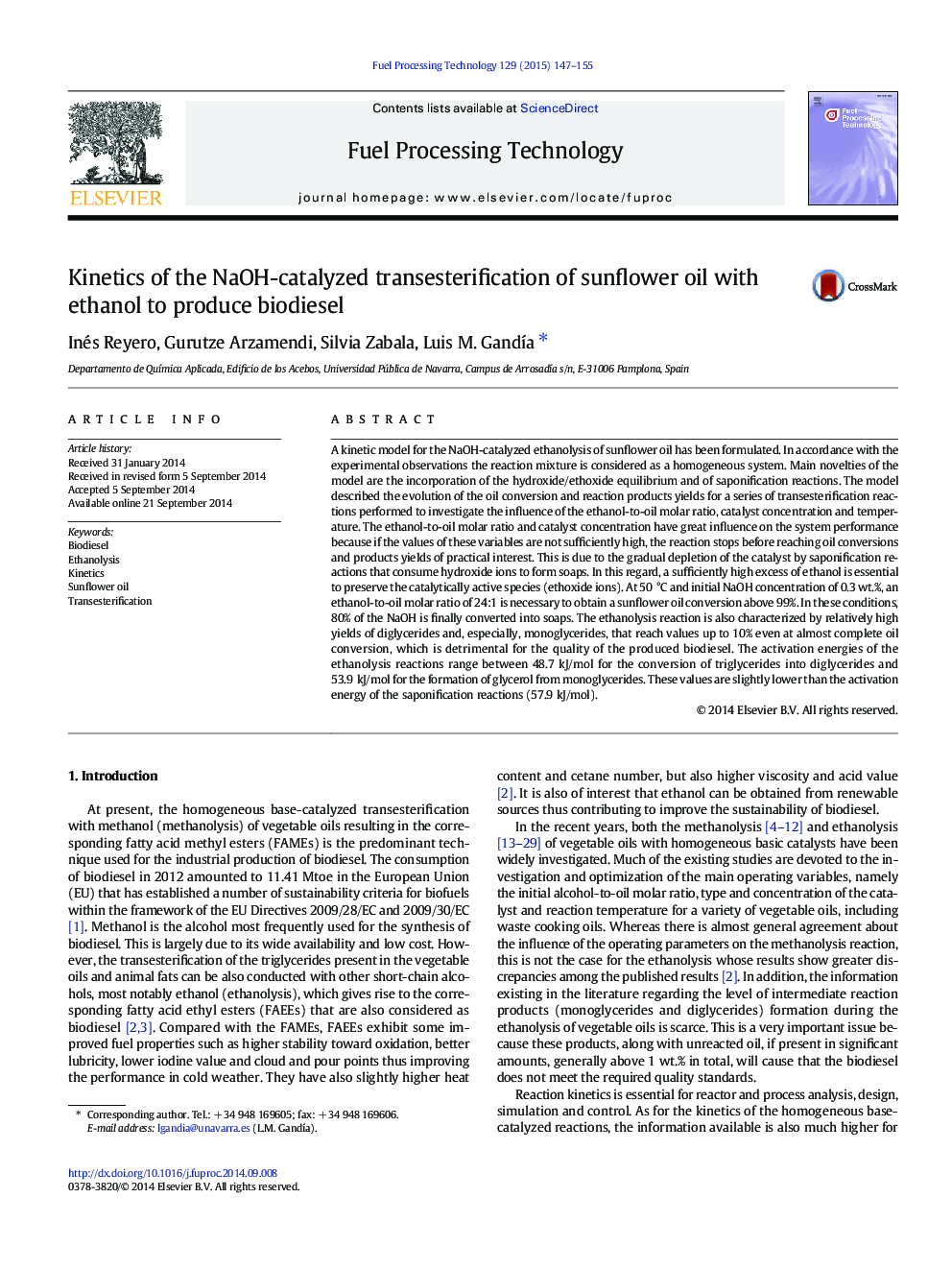| Article ID | Journal | Published Year | Pages | File Type |
|---|---|---|---|---|
| 209625 | Fuel Processing Technology | 2015 | 9 Pages |
•A kinetic model is formulated for the NaOH-catalyzed ethanolysis of sunflower oil.•The hydroxide/ethoxide interconversion and saponification reactions are considered.•A sufficiently high excess of ethanol is essential to preserve the ethoxide species.•Monoglyceride yields are significant (about 10%) at 99% oil conversion.
A kinetic model for the NaOH-catalyzed ethanolysis of sunflower oil has been formulated. In accordance with the experimental observations the reaction mixture is considered as a homogeneous system. Main novelties of the model are the incorporation of the hydroxide/ethoxide equilibrium and of saponification reactions. The model described the evolution of the oil conversion and reaction products yields for a series of transesterification reactions performed to investigate the influence of the ethanol-to-oil molar ratio, catalyst concentration and temperature. The ethanol-to-oil molar ratio and catalyst concentration have great influence on the system performance because if the values of these variables are not sufficiently high, the reaction stops before reaching oil conversions and products yields of practical interest. This is due to the gradual depletion of the catalyst by saponification reactions that consume hydroxide ions to form soaps. In this regard, a sufficiently high excess of ethanol is essential to preserve the catalytically active species (ethoxide ions). At 50 °C and initial NaOH concentration of 0.3 wt.%, an ethanol-to-oil molar ratio of 24:1 is necessary to obtain a sunflower oil conversion above 99%. In these conditions, 80% of the NaOH is finally converted into soaps. The ethanolysis reaction is also characterized by relatively high yields of diglycerides and, especially, monoglycerides, that reach values up to 10% even at almost complete oil conversion, which is detrimental for the quality of the produced biodiesel. The activation energies of the ethanolysis reactions range between 48.7 kJ/mol for the conversion of triglycerides into diglycerides and 53.9 kJ/mol for the formation of glycerol from monoglycerides. These values are slightly lower than the activation energy of the saponification reactions (57.9 kJ/mol).
Graphical abstractFigure optionsDownload full-size imageDownload as PowerPoint slide
